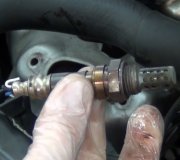First for the chemicals, we call those "mechanic in a can". My opinions were formed when I was an automotive student in the late '70s. At that time the instructors only believed in two things. One was a stop-leak additive for cooling systems and one was GM's "Top Engine Cleaner" that removed carbon buildup. Some people also had good luck with STP but that had to be added to a hot and running engine, otherwise it would just gel at the bottom of the oil pan and sit there. Since those days a lot of new products have become available and many of them do what they claim to do but I've never used them.
The injector cleaners you add to the gas tank are just concentrated versions of what is already added to gasoline. All refiners add something to keep injectors clean. They just advertise and promote them differently. The ones that really seem to get the best results are the soaps professionals use when they sell an injector cleaning service. They disable the fuel pump, then the engine runs for about 20 minutes on the stuff in the pressurized bottle. The biggest improvement is usually seen on high-mileage GM engines.
Varying idle speed is often caused by a vacuum leak. If the symptoms are present while you're under the hood you can pinch off hoses and if one affects it, work your way down to where it branches off, then follow one hose at a time to narrow down the location of the leak. The larger V-8s had a lot of trouble with leaking intake manifold gaskets but they typically leaked coolant out. I don't think that was common on the 4.3L. Also look closely at the fresh air tube between the mass air flow sensor and the throttle body. If any air sneaks in that isn't measured the computer won't command the appropriate amount of fuel to go with it. There can be a wide range of symptoms based on engine speed and acceleration when the leak occurs.
To check for a leaking intake manifold gasket spray water on them while the running engine is still cold. You don't need to add soap. You'll see and hear the water get sucked in if the leak is bad enough, and the engine speed will change. In rare cases the leak can be under the manifold where you can't see, hear, or spray it. You have to rely on interpreting readings on a scanner for that. With small vacuum leaks the oxygen sensor will detect the unburned oxygen and add more fuel in an attempt to correct the mixture. If you view the short and long-term fuel trim numbers they will be high positive numbers meaning the computer is adding fuel beyond the factory-programmed values.
You can also use a propane torch, (no flame), to flood suspected areas with fuel. If there's a vacuum leak that fuel will displace the air and you'll see the scanner show the exhaust is staying rich longer. The oxygen sensor doesn't really detect unburned fuel. It just fails to detect excessive unburned oxygen. Eventually the computer will reduce the amount of fuel from the injectors.
A misfiring cylinder will also result in excessive unburned oxygen being detected. If the problem is spark-related, unburned fuel and air go into the exhaust where only the oxygen is detected as a lean condition. The computer doesn't know it's due to just one cylinder so it commands more fuel to all of them. With a restricted injector you will have just excessive air and again the unburned oxygen will be detected. With a spark problem, no matter how much extra fuel the computer adds there will always be that unburned oxygen still being detected. The short-term fuel trim numbers will be real high positive.
Much of my information on injector trouble comes from a very high-level class put on at my community college by Jim Linder. He owns a company in Indianapolis that specializes in rebuilding injectors. If you do an internet search you can read about the most common problems they run into. They solve the most complaints on GM products by just selling matched sets of injectors but there are many other things they tell to look for.
Monday, April 1st, 2013 AT 8:57 AM


